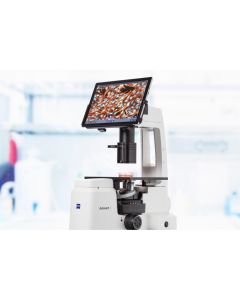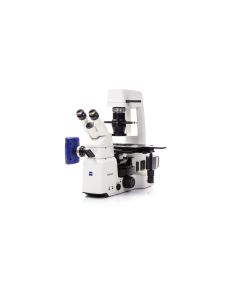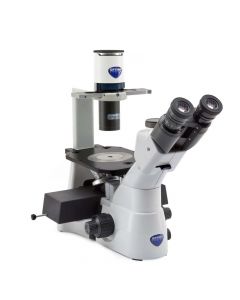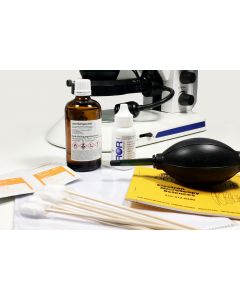Inverted Microscopes
(4)The inverted microscope is multifunctional. In contrast to the upright microscope, the sample is viewed from below (e.g. cell culture) or placed the other way around on the microscope stage (e.g. microscope slide with coverglass). The technical design of the inverted microscope enables the examination of living cells and tissue as well as larger samples that do not fit under an upright microscope. The large sample space is particularly useful for microscopy of cell culture flasks, well plates or relatively large material samples, for example. In addition, micromanipulators, lab-on-chip systems or various incubation systems can be installed on an inverted microscope.
Important areas of application are:
- Biology and medicine: for viewing and examining living cells or tissues in well plates or culture flasks, as well as for monitoring 3D cultures, such as organoids.
- Materials science and industry: for inspecting semiconductor wafers and chips or for examining metals and alloys, where the polished surface of the material must face downwards and be aligned planar to the optical axis.
- Food and beverage industry: for quality control and development of food, beverages and their packaging, e.g. to detect impurities or structural features.







